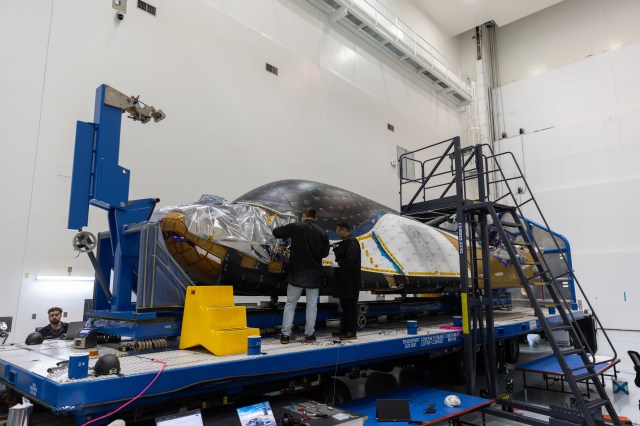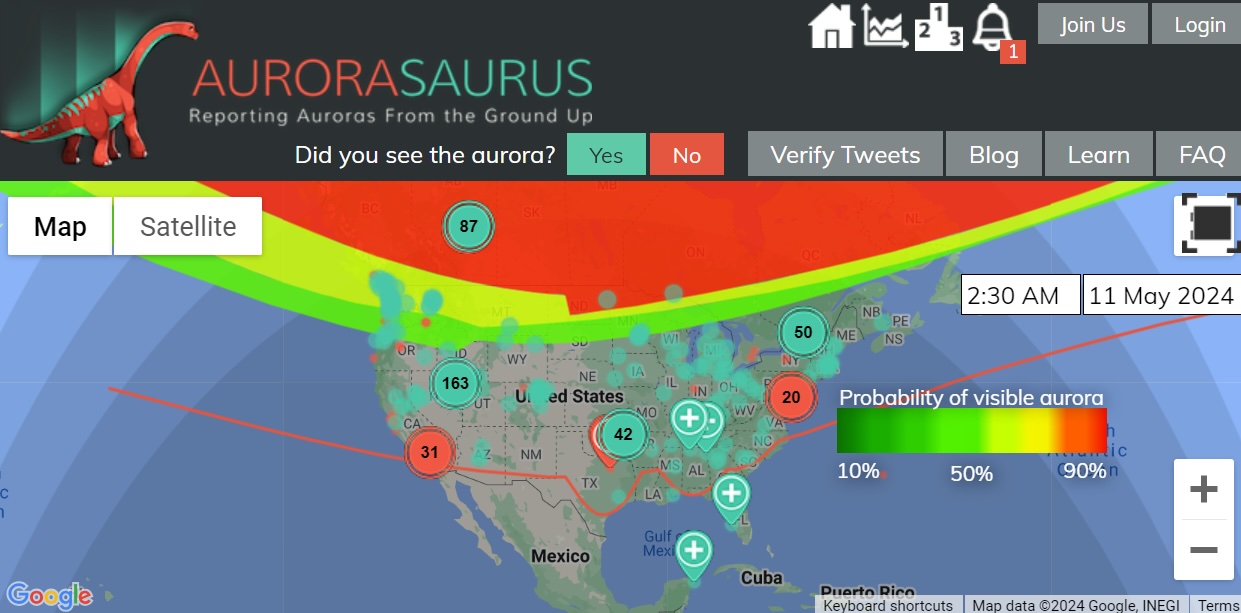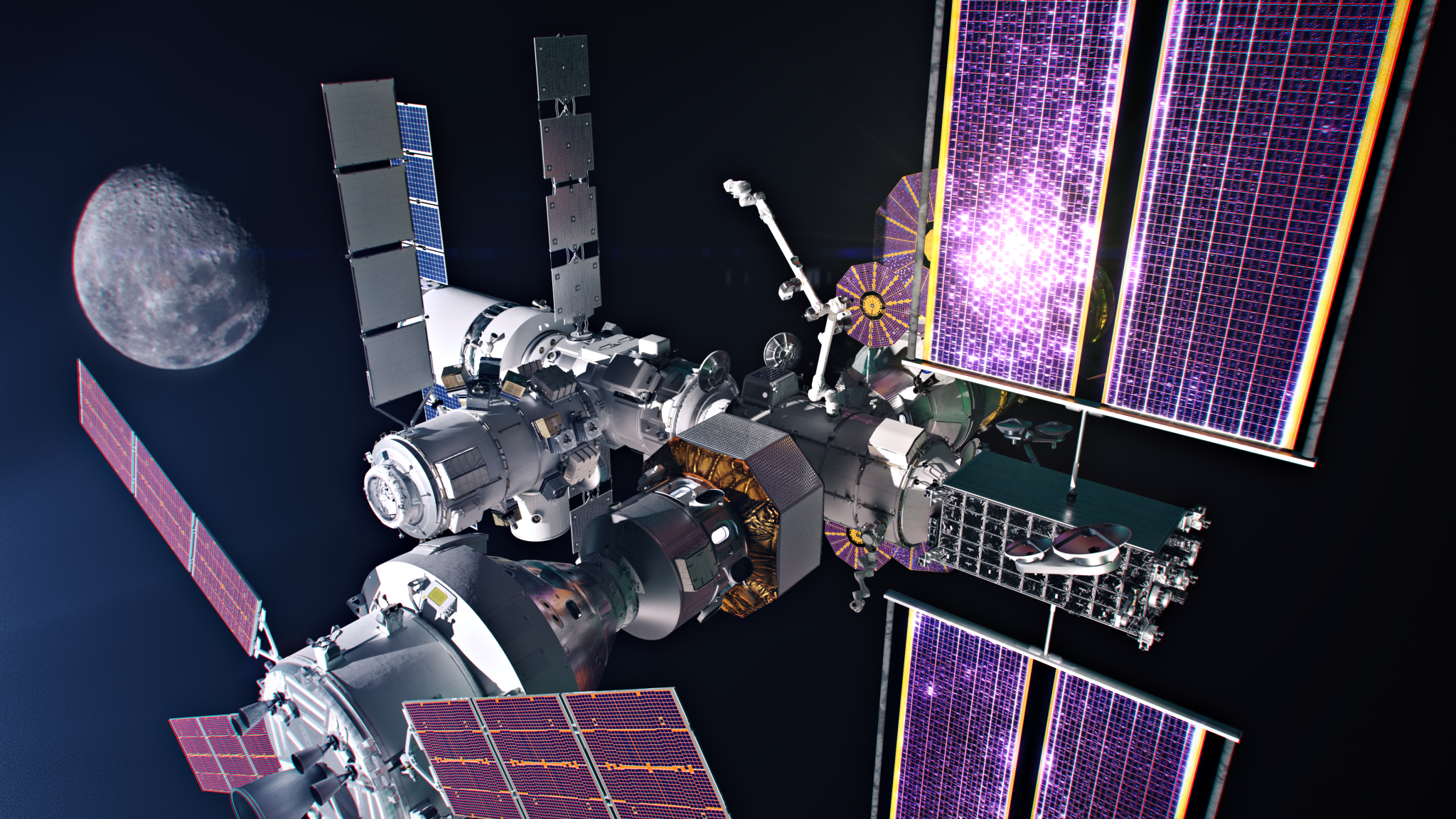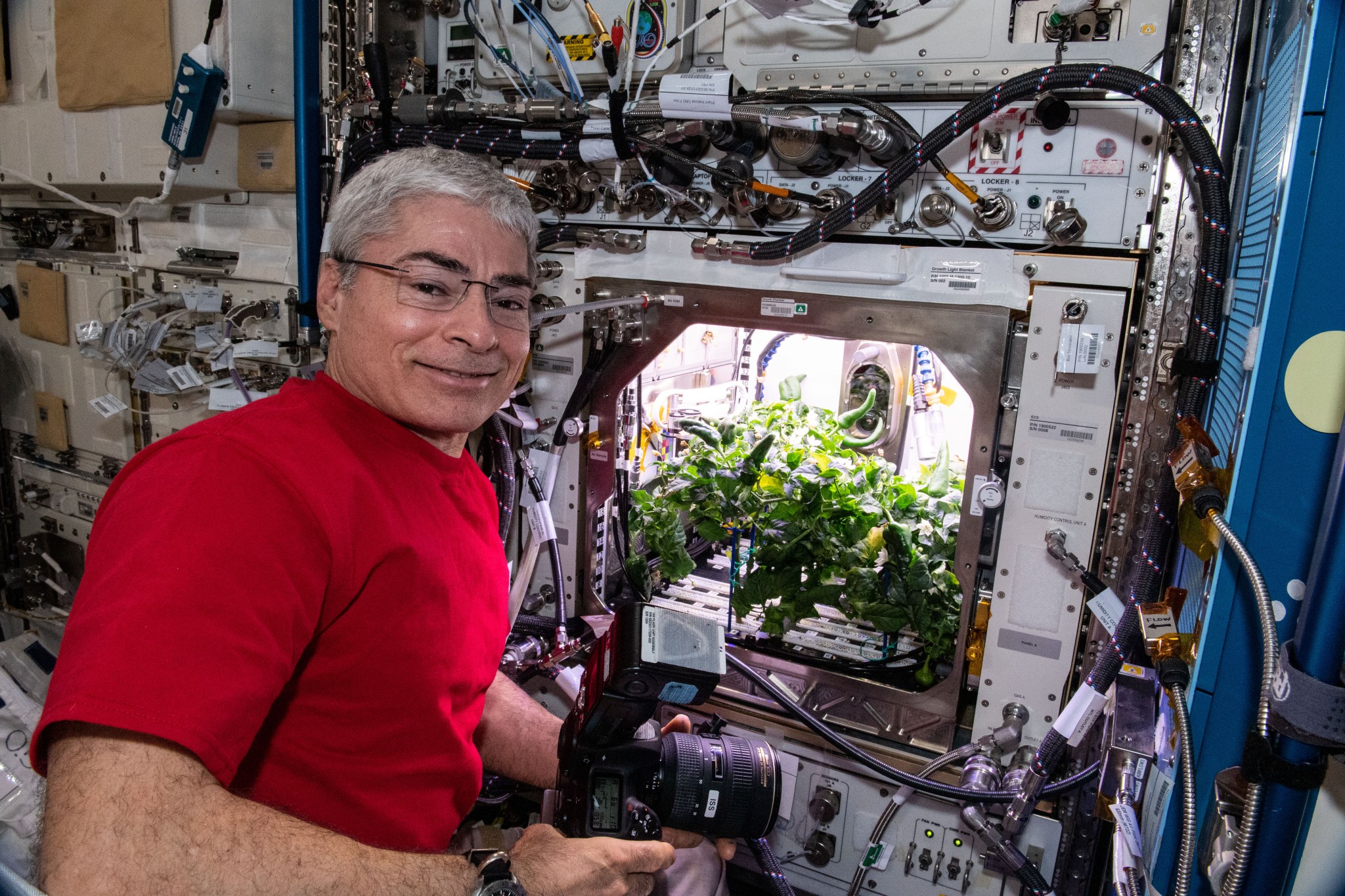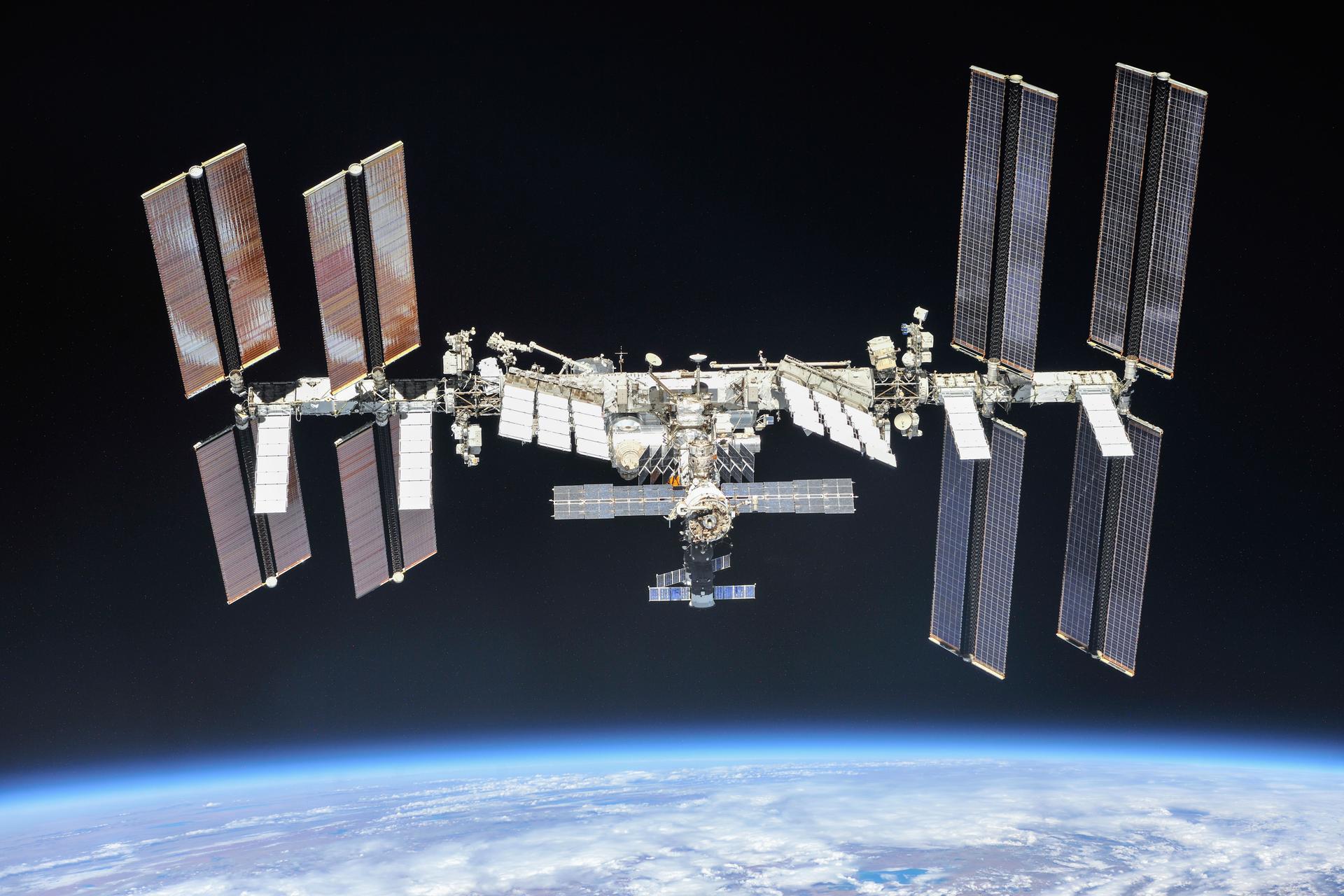Orbital Space Stations

Introduction
Orbital space stations are critical for human space exploration as essential platforms for conducting scientific research, testing technologies, fostering international collaboration, and providing a sustainable environment for astronauts to live and work, paving the way for future deep-space missions and long-term human presence beyond Earth. NASA, along with its international partners, has been continuously involved in the construction, maintenance and operation of the International Space Station (ISS) since the 1990s. The ISS serves as a microgravity and space environment research laboratory, where scientific research is conducted in astrobiology, astronomy, meteorology, physics, and other fields. Johnson Space Center (JSC) has diverse capabilities critical for the design, development, testing, integration, deployment and operation of orbital space stations. From the Space Vehicle Mock-up Facility (SVMF) for training and operational assessments, to advanced robotics testing and human engineering expertise, JSC invites its partners to leverage our decades-long expertise in designing, building and operating space stations. Together, we can pioneer new frontiers, advance scientific research and propel the future of human space exploration.
Operations & Training
EVA/ISS Airlock Training
Overview | NASA JSC Space Vehicle Mock-up Facility (SVMF) can support suited Extravehicular Activity (EVA) crew training events.
Details |
- ISS airlock mockup and EVA suit support capabilities combine to enable unique EVA donning/doffing training at the SVMF
- EVA suit pressurization cart provides realistic pressurized breathable air to the crew in the SVMF environment
Cold Stowage
Overview | The Cold Stowage team is part of the International Space Station (ISS) Program. JSC manages the operation, support and integration tasks provided by Jacobs Technology and the University of Alabama Birmingham (UAB). Cold stowage provides controlled environments to meet temperature requirements during ascent, on-orbit operations, and return, in relation to ISS payload science.
Details | NASA’s vision for humans pursuing deep space flight involves the collection of science in low earth orbit aboard the ISS. As a service to the science community, JSC has developed hardware and processes to preserve collected sincere on the ISS and transfer it safely back to the Principal Investigators. These active and passive cold stowage systems include an array of freezers, refrigerators, and incubators. JSC’s Cold Stowage Lab can perform hold tests, fit checks, and thermal tests by request. Equipment in the lab allows the team to test articles at temperatures ranging between -196° C to +200° C. The team also provides support to payload developers through launch, on-orbit operations, and landing.
Crew Exercise On-Orbit Systems Management
Overview | JSC is the world leader for providing sustaining engineering and systems management for exercise devices.
Details |
Exercise Flight Systems Operations
- Data collection and analysis
- Life tracking, sparing inventory and manifesting
- Preventive and corrective maintenance plans and procedures development
- Risk management
- In-flight anomaly investigation, troubleshooting and resolution
- Flight readiness assessments
Device Sustaining Engineering and Systems Management on ISS
- Treadmills (TVIS and T2/COLBERT)
- Bike (CEVIS)
- Resistive Exercise (IRED and ARED)
- Health Monitoring (BP/ECG and Heart Rate)
- Vibration Isolation and Stabilization (VIS)
Crew Inputs for Operations, Design & Development
Overview | This small, flexible group of Human Engineering experts and stenographers have been conducting, collecting, and analyzing post-mission and on-orbit crew debriefs for the International Space Station (ISS) Program Office since the inception of ISS in 1998. They maintain the official ISS Crew Comments Database that houses ~106,000 comments from over 200 flown crewmembers, covering a wide range of topics from crew dining and hygiene to extravehicular activity/intravehicular activity (EVA/IVA) hardware performance and failures. This database is used to generate specific reports and lessons learned to inform designers, architects, engineers, researchers, and others who design and develop spaceflight vehicles and habitats.
Details |
Services
- Coordinate and conduct crew debriefs post-mission/on-orbit
- Work with system managers to develop crew questions
- Establish and execute unique debrief processes
- Develop and maintain confidential debrief database
- Analyze data and generate reports and transcripts
- Incorporation of historical and current ISS data
- Provide Stenographer services
- Provide Human Factors & Usability expertise on projects
Products
- Crew Questionnaires (Post-Mission and On-Orbit)
- Crew Debrief Transcripts
- Lessons Learned Reports (Topics, Missions, Systems)
Formulation & Analogs
Gateway Mockups
Overview | Mockups of Gateway modules are available to allow for training and operational assessments.
Details |
- Habitation and Logistics Outpost (HALO) mockup at the Space Vehicle Mockup Facility (SVMF) represents the first pressurized element for NASA’s lunar Gateway
- Habitable living space, science operations, mission sortie preparations, communication with ground and lunar assets, and space for physical exercise equipment for 4 crew for up to 30 days
- The HALO mockup can be used for engineering and operations evaluations, interior layout assessments and mission training
- Additional Gateway mockups will be added to the SVMF in the future
- An integrated process to support operations assessments, integration, test readiness, and execution
- All mockups are available to support troubleshooting on the ground any time problems develop on-orbit in real-time
ISS Mockups
Overview | Mockups of all International Space Station habitat modules allow for integrated training and operational assessments.
Details |
- High-fidelity ISS mockups support engineering and operations evaluations such as cargo transfer operations, on-orbit stowage evaluations, fit checks, and procedure development and verification
- An integrated process to support operations assessments, integration, test readiness, and execution
- Activities supported include emergency operations, on-orbit maintenance, photo/TV, stowage and handling, EVA/airlock operations, routine operations, and scientific payload operations
- All mockups and part-task trainers are available to support troubleshooting on the ground any time problems develop on-orbit in real-time
Payload Development Laboratory
Overview | The Payload Development Laboratory (PDL) is a flight-like cylindrical International Space Station (ISS) module mockup in the B9 Space Vehicle Mockup Facility that is used for human research training, testing, simulations, procedure development, scientific payload and interface training.
Details |
- Full scale US laboratory mockup and associated control consoles used for Human Research Facility (HRF) Rack training and high-fidelity payload rack training
- An integrated process to support operations assessments, integration, test readiness, and execution
- Two high fidelity Human Research Facility (HRF) racks (as on ISS) and other flight-like human research hardware
- Flight-like voice, data, and video capabilities
- Flight-like power and utility connections and HRF laptops with flight software
- Ground support personnel consoles with data, voice, and video connections to module interior
Center for Design and Space Architecture
Overview | The Center for Design and Space Architecture (CDSA) is NASA’s conceptual, human centered design studio. They leverage skill in architecture and industrial design to provide customers with functional, intuitive solutions that synchronize with the integrated system.
Details | The CDSA employs an iterative design process and utilizes a variety of digital and physical mediums, including Computer-aided drafting (CAD), virtual reality, and full-scale mockups, to quickly progress design maturity for human spaceflight systems.
- Space Architecture: interior architecture, mission architecture, functional allocation, volumetric analysis
- Design: concept development, CAD modeling, mass and volume estimation, rendering, mockup, and prototype design
- Virtual Reality: design review and evaluation, task simulation, crewed human-in-the-loop (HITL) testing
- Prototyping: 3d printing, CNC, foam core, polycarbonates, wood, metal
- Mockups: part-task, full-scale, test articles, functional prototypes
Human Exploration Cross-Program Integration
Overview | Within the Exploration Architecture, Integration and Science (EAIS) Directorate at JSC, the Exploration Development Integration Division (EDI) provides expertise in integrating complex human spaceflight programs across common missions and architectures.
Details | The Exploration Development Integration Division (EDI) delivers systems engineering, cross-program integration, and operations integration support to the entire Moon to Mars enterprise, supporting all Artemis programs. EDI supports design, development and operational life cycle activities and provides integration in support of the Artemis Missions and the Moon to Mars enterprise.
- Orion cross-program integration and crew systems integration
- Gateway risk management and human rating support
- Human Landing System (HLS) cross-program integration and leadership of the Crew Compartment Program Office
- Moon to Mars System Engineering and Integration support
Human Exploration Program Formulation
Overview | Within the Exploration Architecture, Integration and Science (EAIS) Directorate at JSC, the Exploration Development Integration (EDI) Division, provides expertise to human space flight programs for systems and program integration activities supporting program formulation, design, development, and operational life cycle activities.
Details | The Exploration Development Integration Division (EDI) delivers systems engineering, cross-program integration, and operations integration support to the entire Moon to Mars enterprise, supporting all Artemis programs. EDI supports design, development and operational life cycle activities and provides integration in support of the Artemis Missions and the Moon to Mars enterprise.
Human in the Loop Testing and Analog Mission Planning and Execution
Overview | The Exploration Mission Planning Office (EMPO) at NASA JSC provides organizational expertise for analog mission planning and execution and integration of operational testing for space exploration. Human-in-the-loop (HITL) testing develops and assesses systems, innovations, and operational approaches to inform strategic architectural concept of operations decisions.
Details | The Exploration Mission Planning Office at NASA JSC provides analog mission planning and execution of integrated operational testing for space exploration. Human-in-the-loop (HITL) testing capabilities include establishing and coordinating a multi-disciplinary approach for operational testing, integrating analysis and development components across NASA, and using the results of testing in relevant environments for closing technology, exploration, and science knowledge questions, gaps, and risks.
Engineering Subsystems
Engineering Model for Plume Impingement in Rarefied Environments (EMPIRE)
Overview | Engineering Models for Plume Impingement in Rarefied Environments (EMPIRE) software is a tool used to compute plume impingement heating effects from proximity operations of visiting vehicles to space stations.
Details | Engineering Models for Plume Impingement in Rarefied Environments (EMPIRE) provides an essential analysis capability associated with upper atmospheric flight for the prediction of vehicle aerodynamics and aerothermodynamics, as well as for the broad range of plume impingement environments during rendezvous and docking impacting ISS, Orion, HLS, and all other Gateway components. EMPIRE computes 3D distributions of plume load and mass flux, impingement heating and surface temperature on complex surface geometries from multiple plume sources.
Robotics Sustaining Engineering for Human-Rated Space Vehicles
Overview | Expertise is available in maintaining a safe efficient robotic capability to maximize science and robotic operational life and sustaining engineering and systems management for on-orbit robotics, including these on ISS, Gateway, and Low-Earth Orbit vehicle providers.
Details |
- Robotic Mission Planning Review (Procedure review/update, Flight Rules, etc.)
- Real-time robotics system expertise for nominal and off-nominal operations
- Anomaly investigation and resolution of technical issues with robotic systems and interfaces to dependent systems
- Define, update, and maintain robotic system requirements and verifications
- Review change proposals, waivers, deviations, and exceptions
- Perform trending of robotics systems health
- Integration support with external equipment
- Provide software build feature/capability priorities to robotic SW designers (in house or out)
- Testing and evaluation of payloads for robotic compatibility (including Flight Support Equipment and latching)
- Perform Berthing Camera/Target System implementation tasks for Visiting Vehicles and payload, including overlay development
- Visiting Vehicle robotic development support
- Integration of payloads as pertains to robotic compatibility
- Development of robotics requirements for payload handling
- Review exceptions to requirements and initial verification products
- Coordinate issues/concerns/questions with SMEs
- Review verification submittals
- Coordinate operations
- Robotics Human-Machine Interface
- Develop some integrated SW that utilizes vehicle telemetry to report data to users in intuitive ways
- Develop SW to assist operators in development of on-console products
Integrated Mobile Evaluation Testbed for Robotics Operations (iMETRO)
Overview | iMETRO is designed to catalyze the adaptation of advanced terrestrial robotic technologies for space exploration use cases, such as logistics, maintenance, and science utilization within environments designed for human exploration on the Lunar and Martian surfaces. The iMETRO focus is on Intra-Vehicular Activity (IVA) environments, such as surface habitats, pressurized rover cabins, and space station internal modules. The iMETRO goal is to increase the availability of end-to-end systems enabling remote operation of robots in space supervised by humans on Earth. These systems include ground control user interfaces and software for managing robot remote control with realistic latency, bandwidth, and coverage interruptions for various mission environments (e.g., Low Earth Orbit, cis-Lunar, Lunar Surface, Mars Surface).
Details |
iMETRO Virtual and Physical Components
- The virtual facility includes open-source robot configurations (e.g., URDF) for iMETRO robots as well as models of mock-ups for space use cases, such as the crew access hatch and logistics stowage task trainer.
- The physical facility consists of a range of facility features and robot options. A variety of mock-ups and task trainers are available, and additional customized mockups can be designed and constructed by JSC staff for mission scenarios as needed.
Facility Features
- ROS2 compatible software interfaces
- Frame-mounted PTZ cameras
- Remote operator situational awareness
- Optical tracking ground truth for pose estimation and navigation
- Isolated robot network with configurable latency and bandwidth restrictions (currently a future planned capability)
iMETRO assets
- Mobile
- Relocatable
- Work with other facilities and larger mockups
- Gravity offload facility (ARGOS)
- Extra-vehicular robot facility (eDMT)
- Robots working inside large mockups in the adjacent high bay
Robot Options
- Linear rail-mounted single manipulator (available now)
- Universal Robots UR10e
- Robotiq hand-E Gripper w/ Custom Fingers
- Vention horizontally mounted 2.0m linear rail
- Ewellix Telescoping Lift Kit with 700mm Stroke
- Intel® RealSense™ Wrist-Mounted Depth Camera
- Mobile Base Dual Manipulator (coming in 2024)
- Universal Robots UR5e (2x)
- Robotiq Hand-E Grippers with Custom Fingers
- Arms mounted to dual, independent lift-kits of 500mm Stroke
- Clearpath Ridgeback Wheeled Mobile Base
- Intel® RealSense™ Wrist-Mounted Depth Cameras
- Bring Your Own Sensors and/or End Effectors
- Utilize standard interfaces
- Bring Your Own Robot
- Test custom configurations with iMETRO space application mock-ups and end effectors
Electric Dexterous Manipulator Testbed (eDMT)
Overview | The Electric Dexterous Manipulator Testbed (eDMT) is used for testing space robotic payloads, interfaces, and concepts of operation for ISS and future Moon and Mars exploration missions. It consists of two six-jointed, electromechanical, Commercial Off-The-Shelf (COTS) serial manipulators. The larger Yaskawa Motoman manipulator is capable of handling heavy payloads and is integrated with an emulator for the International Space Station (ISS) Special Purpose Dexterous Manipulator (SPDM) end effector. The smaller Kuka manipulator is more portable and capable of running real-time dynamic simulations for a wider variety of applications. The Kuka robot is still being commissioned.
Details |
Testbed Features:
- Closed-loop force and moment accommodation
- Detailed force and position metrology
- Mounted T-slot tables for mockup integration
- On-orbit Tool Change Mechanism Emulator (OTCME) end effector for grasping standard interfaces
- Optical motion tracking
Yaskawa Motoman ES165RD-II:
- 3 meter reach
- 165 kg payload capacity
- Permanent mount in facility
Kuka KR70 R2100:
- 2.1 meter reach
- 70 kg payload capacity
- Fast response to sensor feedback, ideal for handling delicate payloads and testing autonomous operations
- Pedestal mounted in facility, but lightweight enough to transport via forklift for integrated testing
Systems Engineering Simulator (SES)
Overview | The Systems Engineering Simulator (SES) provides immersive, human-in-the-loop simulations of NASA vehicles. These simulations utilize realistic cockpits that are typically installed within a dome visual system and paired with engineering-fidelity models of the vehicle systems and the space environments in which they operate. These simulations are utilized for all phases of a space mission, from early conceptualization through system development, mission planning, training, and operations.
Details |
- Two dome visual systems, one containing an ISS cupola mockup and the other containing an Orion mockup (either upright or reclined)
- Six-Degrees-of-Freedom (6-DOF) motion table for simulating Artemis assets, including rovers and landers
- Video wall containing reconfigurable cockpits for assessing advanced concept vehicles
- Math modeling of space vehicles and the environments in which they operate
- Study/training support to develop initial conditions, verify scenarios, support operations, and post-process data as needed
- Real-time maintenance support to resolve issues with minimal downtime
Spacecraft Glass & Windows
Overview | On-site expertise is available for successful design, modeling, analysis, and testing of spacecraft windows. Also, includes the Window Material Database that is used to characterize window materials for the spaceflight environment in a standardized way to facilitate window design trades.
Details |
- Standardized processes, procedures, facilities, personnel and material thicknesses (0.5”) will be used for characterization
- Allows for an apples-to-apples comparison between performance parameters for different materials
- Data is collected by objective NASA personnel
- No concerns for mismatched testing methodologies between materials
- No concerns for supplier creative marketing departments
- Enables designers to pursue innovative and integrated window subsystem designs and to optimally match mission requirements to window materials
- Will enable challenging future mission scenarios such as long duration habitats
- Will enable lightweight window subsystems
- Spaceflight relevant environments will be applied to characterize material performance, with parameters chosen based upon window design requirements needs
- The database is intended to be publicly released for use in the spaceflight industry
- Data will be stored in a publicly accessible database
- In the interim (while data is being developed), data will be made available to designers upon request
Integrated Hazard Assessment
Overview | NASA JSC Safety and Mission Assurance (S&MA) Organization offers expertise in generating and processing Integrated Hazard Analyses (IHA) and hazard reports in support of the human spaceflight programs.
Details | NASA JSC Safety and Mission Assurance (S&MA) Organization offers expertise in generating and processing Integrated Hazard Analyses (IHA) and hazard reports in support of the human spaceflight programs. S&MA currently provides resources to conduct of Gateway IHA activities.
Safety Review Panel Process
Overview | Safety and Mission Assurance (S&MA) offers expertise in application, implementation, evaluation, and facilitation of safety review processes.
Details | Utilization of NASA S&MA resources impacts current efforts in the conduct of NASA safety activities for the ISS, Crew visiting vehicles with ISS, Gateway program milestones, and Extravehicular Activity & Human Surface Mobility Program (EHP) safety programs.
Hazard Report Development and Requirement Non-Compliance
Overview | Safety and Mission Assurance (S&MA) offers consultation within application, implementation, evaluation, and facilitating collaborating with projects and programs in the development and approval for hardware, payloads, systems, and visiting vehicles hazard reports and noncompliance risk paper that is approved by ISS Program leadership.
Details | Utilization of these resources impacts current NASA S&MA efforts in the conduct of current NASA safety activities for space stations, crew vehicles, habitats, and EVA safety programs.
Note: The development will be “on a special case-by-case basis” in response to specific requests with the assurance that developers will not be the checkers and approvers of those relevant hazard reports.
Odor & Offgas Flight Acceptance and Standard Testing (FAST)
Overview | White Sands Test Facility conducts odor testing and offgas testing. The facilities detect, identify, and quantify all gaseous compounds and odors released from a material or article under human habitable atmospheric conditions. Human evaluation of odors can also be performed.
Details |
- Four trained and certified analytical chemists to identify and quantify all offgassed products
Analytical Capabilities
- Two Gas Chromatographs (GC) equipped with Fourier transform infrared (FTIR) detectors and mass spectrometers (MS) for detecting and quantifying offgassed inorganic and organic compounds
- One GC equipped with a Flame Ionization Detector (FID) for detecting and quantifying offgassed organic compounds
- One GC equipped with a methanizer coupled to a FID for detecting and quantifying carbon monoxide and methane
- One GC equipped with a thermal conductivity detector (TCD) for detecting and quantifying hydrogen
- Simulated-use testing conducted in two airtight gloveboxes
- Handling of electrostatic discharge (ESD) components. Class 1 ESD protective workstation available
- Test small to very large materials and components. A large array of offgassing chambers to fit most any size material or test article (2 L through 86700 L) are maintained for testing. Our largest offgassing chamber is the CVI® self-heating cylindrical offgassing chamber. This chamber is 1.83 m (6 ft) in diameter and 2.74 m (9 ft) long. This chamber can achieve vacuums as low as 1.33 Pa (1 × 10-2 torr), with a temperature range from ambient ~ 21 to 93°C (70 to 200°F).
- Thermal conditioning capabilities range from ~21 to 316 °C (~70 to 600°F). Five thermal conditioning ovens (incorporating multiple temperature measurement systems) are connected to an automatic alarm system to notify personnel of power outages and/or temperature nonconformities. Ovens can handle the entire size range of sample chambers.
- Odor Test Panel maintained and tested for odor testing (Test 6). An “Odor Mission” is conducted by five certified odor panel members under the direction of an Odor Panel Test Conductor. These five odor panel members are selected randomly out of a pool of all odor panel members and their sense of smell tested to ensure sensitivity.
- On-site state-of-the-art test article/material preparation and analytical laboratories with full sample preparation, measurement, thermal conditioning, and chemical analysis capabilities are maintained.
- A secure, limited-access storage area for spaceflight items and other high cost/importance items is utilized
- Direct test data entry and storage into a secure, laboratory information and tracking system that automatically generates the reports for review and transmittal is maintained
- Materials and equipment to handle heavy and bulky articles up to 909 Kg (2000 lb.) (heavier with prior notification), are available. In addition to a full rack, sized to hold test articles in the 3 m (10 ft) by 1.8 m (6 ft) chamber.
Micrometeoroid and Orbital Debris (MMOD) Testing
Overview | The White Sands Test Facility’s Remote Hypervelocity Test Laboratory (RHTL) is an access‐controlled hazardous test area capable of simulating Micrometeoroid and Orbital Debris (MMOD) impacts. This unique NASA facility was designed to safely handle and test hazardous targets, and simulate impacts on shields, spacecraft, satellites, and spacesuits.
Details |
- Three different caliber gun ranges; 1 inch, .50 caliber, and .17 caliber guns able to propel single 0.05 mm to 22.2 mm diameter projectiles with velocities in excess of 7.5 km/s
- The facility is remotely located with access control protocols and underground bunkers for personnel protection
- Various high speed cameras are used, some capable of 200 million frames per second, to capture the target impact and debris cloud
- Ability to measure projectile velocity with laser intervalometers
- High-speed data acquisition to capture the diagnostic information from the light detectors and temperature, pressure, and shock measurement sensors
- Ability to test hazardous test articles (energized, pressurized, toxic materials, pyrotechnics, etc.)





